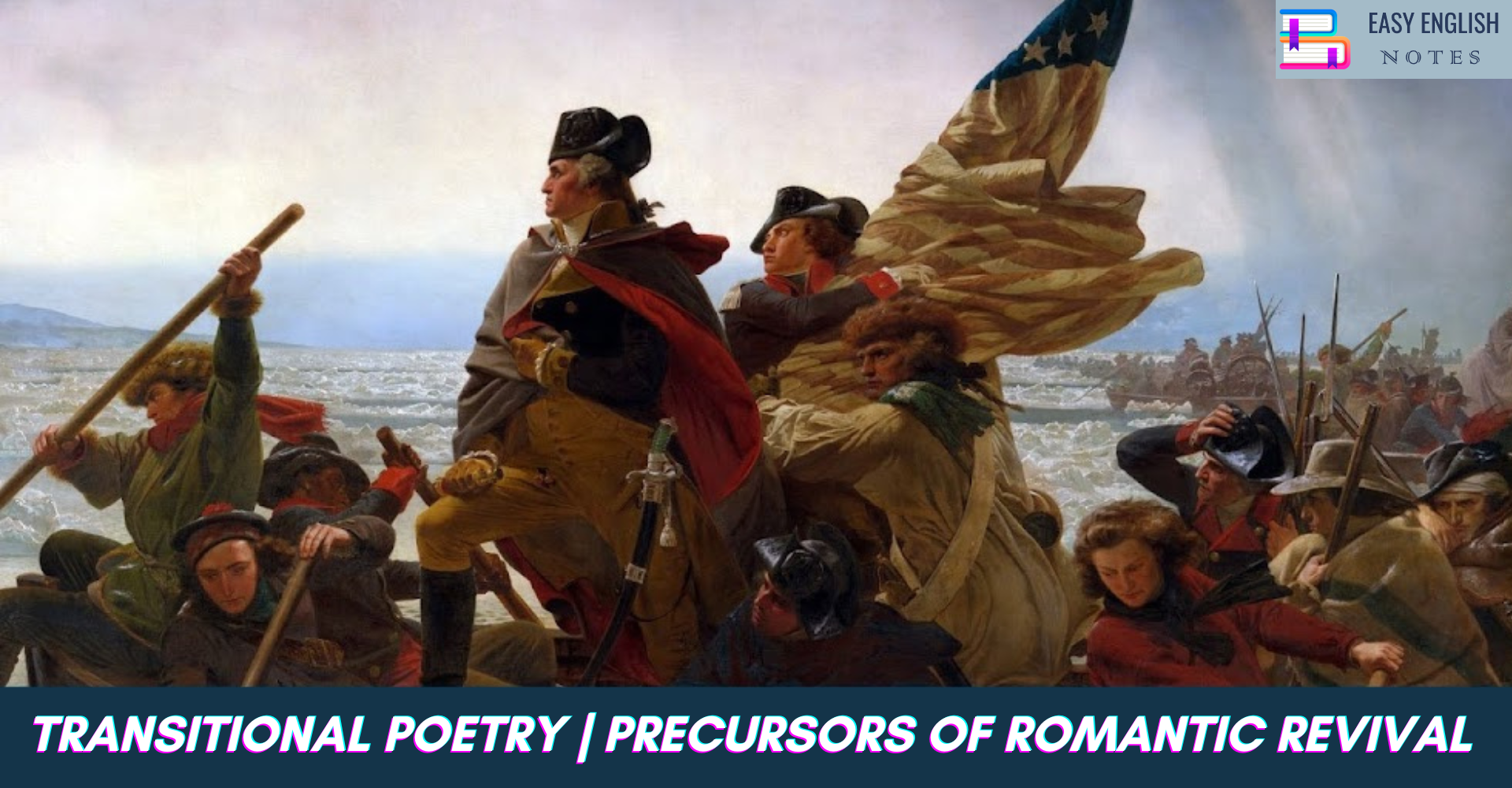Eighteenth century was an age of reason. The poets of the period believed in an instrument of finding the truth of life. They thought the individual to be less important than the society. Individuals were expected to follow certain standard modes of behaviour. He had to accept the prevalent thoughts and ideas. There was no rule for the free play of individuality. So, poets had to write on limited themes in accepted poetic forms and metres. But a group of poets revolted against the eighteenth century tradition. They believed in human imagination and intuition. They had uncompromising love for liberty. They stood against the cementation of eighteenth century and anticipated the poets of romantic period. So, they are called the precursors of Romantic Revival. Poets of this group were Thomson, Gray, Collins, Cowper, Burns and Blake.
James Thomson is the first poet who turned from the heroic couplet and sought other forms. He wrote about the countryside. He found more inspiration in Milton’s blank verse than in Pope’s couplet. “The Season” is an important poem by Thomson. It is a minute description of the changing countryside under snow, spring, rain or summer sunlight. But it is not quite a Romantic poem. The descriptions in this poem are too general. They suggest abstract thought more than concrete observation. Thomson attempted the Spenserian stanza in “The Castle of Indolence”.
Thomas Gray is best known for his “Elegy In A Country Churchyard”. In this poem, Gray shows the same classical concern with perfection of form as Pope. Gray took great trouble in the polishing of his verse. His Elegy’s easy flow is the result of his hard work rather than inspiration. In his other poems, Gray looks moving towards Romanticism by attempting a greater freedom of form. In “The Bard”, he chooses themes that suggest wildness and anarchy. But it falls flat because of its artificiality of language.
William Collins is much more of a Romantic than Gray, his “Persian Edoques” are a failure. But his “Ode to Evening” is very nearly a triumphant success. Collins uses what seems to be a revolutionary stanza-form. But on closer analysis, it is seen to be the form of Horace’s Odes. This poem is essentially a musical achievement but the ending is tame.
Also Read :
- Compare Hamlet with Macbeth, Othello and other Tragedies
- “The Pardoner’s Tale” is the finest tale of Chaucer
- Prologue to Canterbury Tales – (Short Ques & Ans)
William Cowper achieved a larger bulk of verse than either Gray or Collins. He lived long to free himself from the domination of heroic couplet. He is a poet of nature. “The Task” is his famous poem. In this poem, he comes close to Wordsworth in his insistence that nature is a great friend and header. In poems like “On the Receipt of my mother’s picture”, the personal element is overdone.
Robert Burns was the first poetic rebel of the century. He revolted in his personal life against the control of conventional morality. He shows himself capable of writing masterfully in two distinct styles. Firstly, he has written in the polite style of England. Secondly, he has used the rougher style of his own land. There is nothing hypocritical about Burns. He sings about the things he likes. “My love is like A Red, Red Rose” shows the remarkable lyrical genius of Burns.
William Blake belonged to the eighteenth century. But in spirit, he was romantic. He believed in imagination and intuition as the methods of finding truth. For Blake imagination is nothing less than god as he operates the human soul. Blake gave the highest position to the individuality and the emotion. Eighteenth century poets wrote primarily in Heroic Couplet. But Blake used a number of poetic measures for the expression of his individual vision. It was his feeling that different kinds of imagination can be expressed properly in different metres.
The poets of this school formed a background on which the super structure of Romantic Poetry was built by Wordsworth, Coleridge, Shelley, Keats and Byron.
PLEASE HELP ME TO REACH 1000 SUBSCRIBER ON MY COOKING YT CHANNEL (CLICK HERE)











